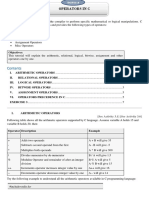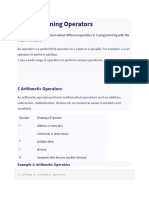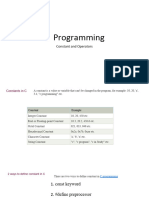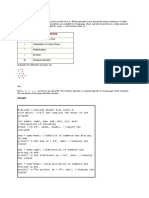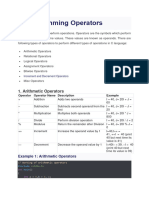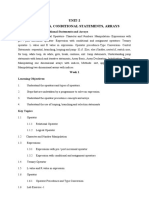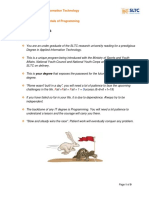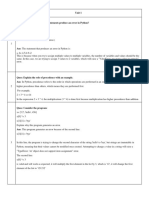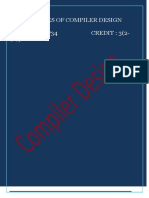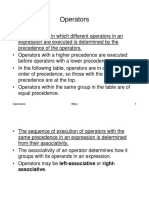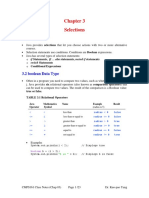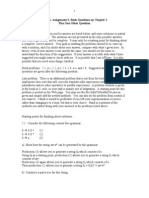0% found this document useful (0 votes)
23 views21 pagesLDP Unit-3 Material
Operators and expressions are fundamental concepts in C programming. [1] Operators are symbols that represent actions to be performed on operands, like addition (+). [2] Expressions combine values and operators to produce a single value. [3] There are several types of operators in C, including arithmetic, relational, logical, assignment, bitwise, conditional, and increment/decrement operators.
Uploaded by
Nidhi SindalCopyright
© © All Rights Reserved
We take content rights seriously. If you suspect this is your content, claim it here.
Available Formats
Download as PDF, TXT or read online on Scribd
0% found this document useful (0 votes)
23 views21 pagesLDP Unit-3 Material
Operators and expressions are fundamental concepts in C programming. [1] Operators are symbols that represent actions to be performed on operands, like addition (+). [2] Expressions combine values and operators to produce a single value. [3] There are several types of operators in C, including arithmetic, relational, logical, assignment, bitwise, conditional, and increment/decrement operators.
Uploaded by
Nidhi SindalCopyright
© © All Rights Reserved
We take content rights seriously. If you suspect this is your content, claim it here.
Available Formats
Download as PDF, TXT or read online on Scribd
/ 21





